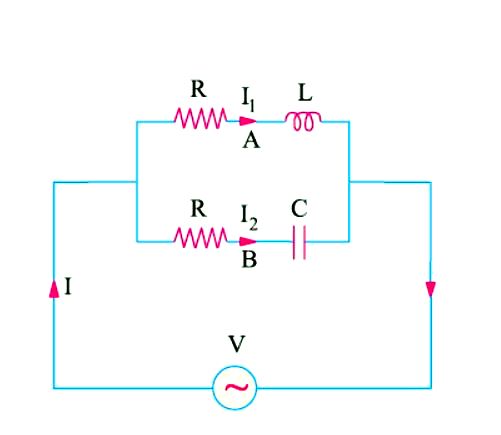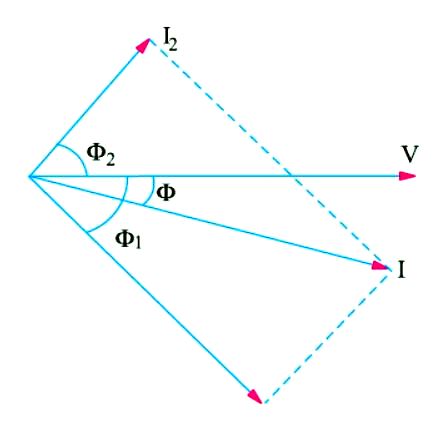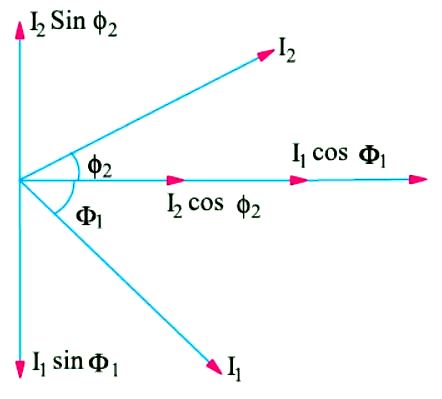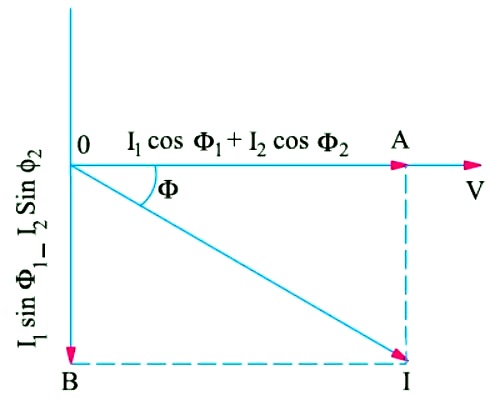Solving Parallel Circuits Vector or Phasor Method
In this article we will discuss on Solving Parallel Circuits Vector or Phasor Method to solve the parallel AC circuit.
Consider the circuits shown in Figure (A). Here, two reactors A and B have been joined in parallel across an R.M.S. supply of V volts. The voltage across two parallel branches A and B is the same, but currents through them are different.


For Branch A, ![]() ;
;
I1 = V/Z1 ;
cos φ1 = R1/Z1 or φ1 = cos−1(R1/Z1)
Current I1 lags behind the applied voltage by φ1 (Figure (B)).
For Branch B, ![]()
Resultant Current I
The resultant circuit current I is the vector sum of the branch currents I1 and I2 and can be found by (i) using parallelogram law of vectors, as shown in Figure (B).
or
(ii) resolving I2 into their X- and Y-components (or active and reactive components respectively) and then by combining these components, as shown in Figure (C) & (D).
Method (ii) is preferable, as it is quick and convenient.
With reference to Figure (C) we have
AdBlock-2

Sum of the active components of I1 and I2
= I1 cos φ1 + I2 cos φ2
Sum of the reactive components of I1 and I2
= I2 sin φ2 − I1 sin φ1
If I is the resultant current and φ its phase, then its active and reactive components must be equal to these X-and Y-components respectively [Figure (D)]
I cos φ = I1 cos φ1 + I2 cos φ2 and I sin φ = I2 sin φ2 − I1 sin φ1
![]()
and
![]()
If tan φ is positive, then current leads and if tan φ is negative, then current lags behind the applied voltage V. Power factor for the whole circuit is given by


Read article – R.M.S. supply
Visit NCERTplanet.com for NCERT solutions and Textbook downloads




